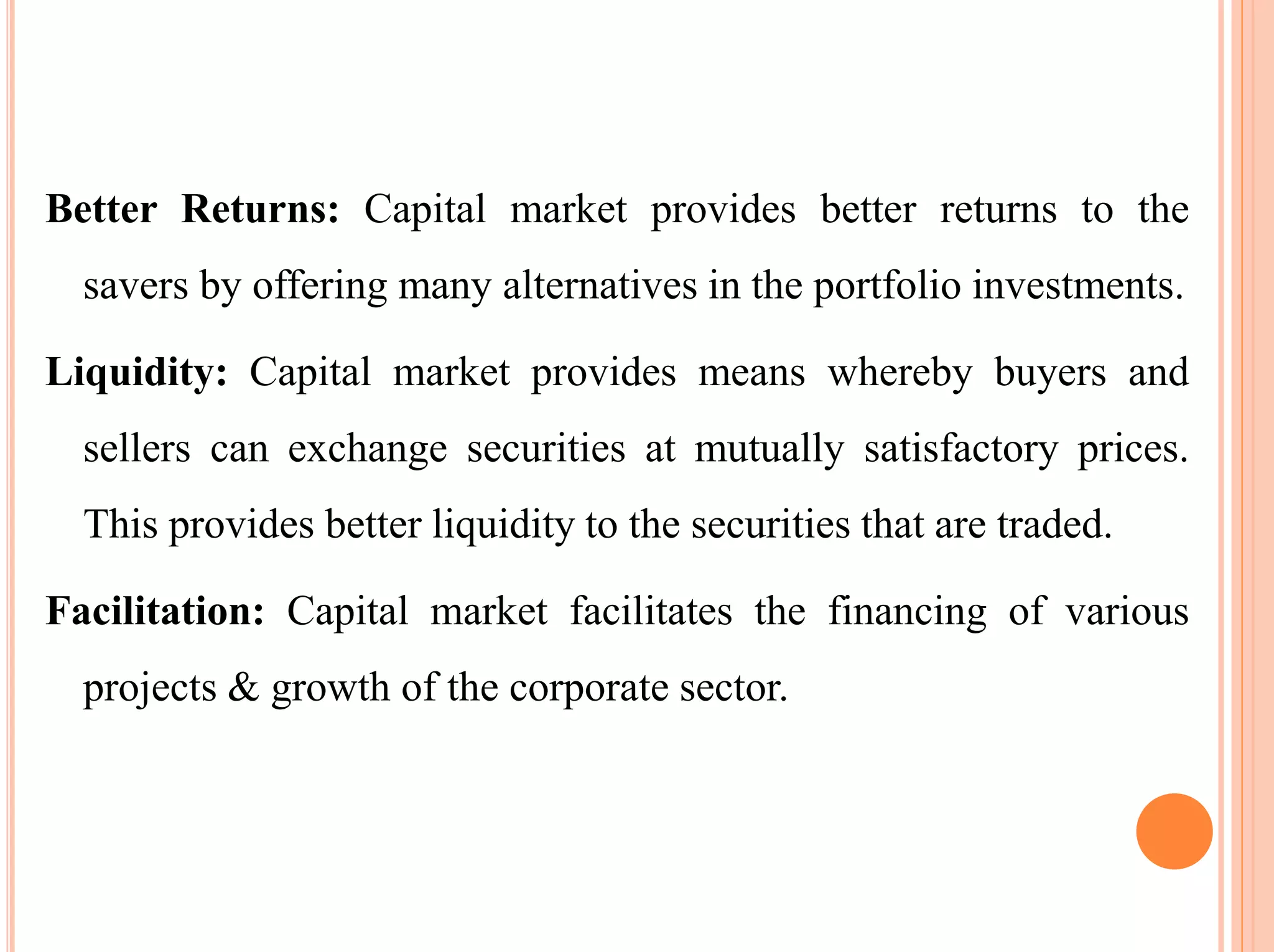Embed presentation
Download to read offline






































































































The capital market is a sector for borrowing and lending long-term funds through financial instruments such as shares, bonds, and debentures, serving as a crucial mechanism for economic development. It includes both primary and secondary markets, regulated by government authorities like SEBI, facilitating the transfer of savings to investments while offering liquidity to investors. The capital market plays an essential role in capital formation, resource allocation, and providing diverse investment opportunities, thus contributing to a country's overall economic growth.





































































































